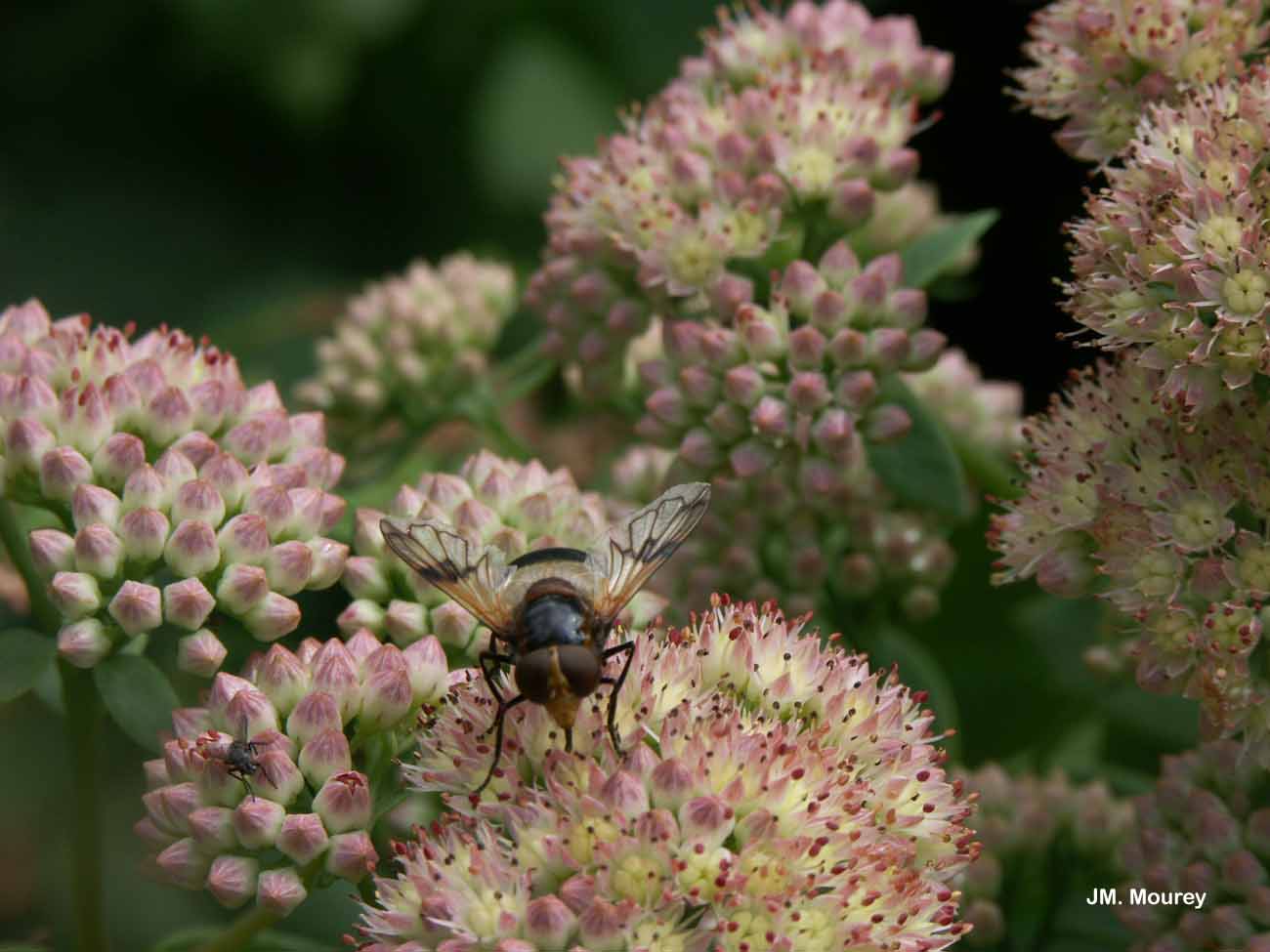
cd_nom

| Author : J.M. Mourey |
 |
To get the picture, please visit:
Jean-Michel MOUREY
Office National des Forêts - Direction de l'Environnement et des Risques Naturels
2 avenue de Saint-Mandé
75 012 PARIS
e-mail : jean-michel.mourey@onf.fr
Legend: Crenans
Any reuse of one or more photographs on this site is subject to an authorization request from the author.
Link to the Code of Intellectual Property (Legifrance)

| Author : J.M. Mourey |
 |
To get the picture, please visit:
Jean-Michel MOUREY
Office National des Forêts - Direction de l'Environnement et des Risques Naturels
2 avenue de Saint-Mandé
75 012 PARIS
e-mail : jean-michel.mourey@onf.fr
Legend: Crenans
Any reuse of one or more photographs on this site is subject to an authorization request from the author.
Link to the Code of Intellectual Property (Legifrance)
Taille :
Grande, 15 à 18mm.
Diagnose :
Le genre Volucella compte six espèces en France, on le reconnaît grâce aux antennes courtes avec une arista fortement plumeuse, à la couleur de la face qui jaune et à la nervation alaire particulière (la première cellule radiale est fermée et la nervure radiale 4+5 est droite). Cette espèce en particulier se reconnaît grâce à ses motifs abdominaux avec le deuxième segment abdominal comportant deux grosses taches blanchâtres et le quatrième segment entièrement noir. La pilosité du scutellum (partie postérieure du thorax qui recouvre la jonction avec l'abdomen) est noire.
Facilité d'identification :
Facile, détermination sur photo possible.
Confusions possibles :
Confusion possible avec Volucella inflata.
Période de vol:
Les adultes sont visibles du mois de mai jusqu'au mois d'octobre.
Répartition générale:
Elle est présente de la Scandinavie jusqu'à la péninsule ibérique en passant par les îles britanniques, puis vers l'est elle s'étend à travers toute l'Europe puis la Russie et le Caucase pour atteindre la côte pacifique en passant par l'Inde.
Habitat et biologie:
Espèce d'affinité forestière présente en forêt de feuillus comme les hêtraies ou les chênaies, on peut la retrouver dans les broussailles ainsi que dans les haies. Les adultes s'observent dans les zones dégagées en forêt (clairières, chemins, …) notamment les mâles bien visibles en vol stationnaire souvent à plusieurs mètres de haut. Les larves vivent dans les nids de guêpes du genre Vespula où elles sont à la fois détritivores et prédatrices des larves.
Speight, M.C.D. (2020) Species accounts of European Syrphidae, 2020. Syrph the Net, the database of European Syrphidae (Diptera), vol. 104, 314 pp., Syrph the Net publications, Dublin.
Thomas Lebard(),2021
Continental
Metropolitan France
Overseas
Marine
Metropolitan France
Overseas
The map presents a summary at the 10 x 10 km grid of the observation data for the species transmitted to the SINP. These data have been subjected to validation filters.
The map presents a reference distribution layer of the species at the scale of departments and marine sectors. The presence and absence data were established by expertise within a network of partners. This reference distribution is used in the validation process of the SINP data at the INPN level.
Corresponds to a report on the basis of at least one observation proved within a period of 10 years (20 years for little-known invertebrates) preceding the year and no presumption of extinction since obtaining the last data nor doubt on reproductive and implemented nature of this population. For migratory species, the presence indicated concerns areas of reproduction.
This status is based on one or more of the following criteria:
This point covers the absence, more difficult by nature to demonstrate than presence. This status is based on one or more of the following criteria:
This status must be assigned to a department in which the presence of the species is casual.
Particular case of absence due to a proven extinction less than a half century ago (older disappearances are treated as "no probable or definite").
In the state of knowledge, we can not comment on the presence or absence in the current department. This is the default status when not comprised in one of the previous categories or whenever there is doubt.
The map shows the global distribution of the species based on GBIF data (Global Biodiversity Information Facility).
